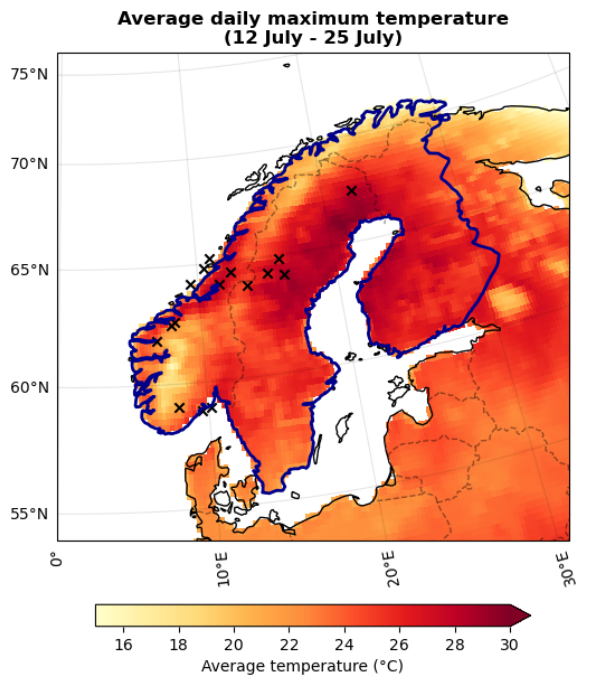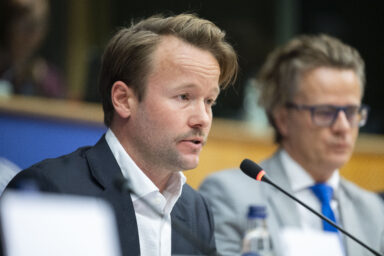Unusually hot weather across Scandinavia that lasted for much of July 2025 may become a norm in the coming years, scientists warn. Ongoing climate change makes such events much more likely than in the past. High temperatures put health care and social services under great strain with many facilities working at the edge of capacity.
Maximum temperatures well above the 30 °C mark for more than 15 days in a row with nighttime minimums of around 20 °C. This is not a report from a sweltering Mediterranean beach resort. Such conditions were recorded in the north of Europe in mid-July in many localities close to the Arctic Circle. Much of Scandinavia experienced a heat wave never recorded in the past.
Cimate change contributed by additional 2 °C
A scientific report released on 14 August by World Weather Attribution, an academic collaboration studying extreme event attribution and calculations of the impact of climate change, estimates that climate change made July’s extreme heat in Scandinavia about 2 °C hotter.
Even seemingly small increases in warming expose people to more frequent periods of dangerous heat. — World Weather Attribution report
Scientists note that in 2018 the region was hit by a similarly persistent heatwave. Due to global warming increasing from 1.1 to 1.3 °C in the meantime, however, similar heat waves are now estimated to be twice as likely as they were seven years ago. This finding highlights how even seemingly small increases in warming expose people to more frequent periods of dangerous heat.

After a further 1.3°C of global warming—the level projected to be reached by the end of the century under current policies—the likelihood and intensity of such events are projected to continue to increase. It would become a further 1.4 °C warmer and a further five times as likely.
Health service and environment under pressure
Extreme temperatures meant that health care and social services were strained across Nortehrn Europe. Some hospitals had to cancel planned operations as they had to cope with an influx of patients with heat-related issues. In the midst of holiday season, many facilities were functioning with reduced staffing.
The heat also disrupted ecosystems. Reindeer were spotted in towns, likely trying to find water and relief from pesky insects. In Norway, drivers were warned about the danger of encountering them in tunnels as they fled the heat. The hot weather also dried out the soil and vegetation, creating favourable conditions for wildfires. As a result, numerous wildfires occurred across the region, including in Lapland. Algal blooms in the Baltic Sea, as well as lakes in Finland, have been unusually extensive this summer due to high temperatures.
Europe is the fastest warming continent
Europe and the Arctic are heating up faster than the rest of the world. Copernicus data estimate that Europe, as the fastest-warming continent, has warmed by approximately 0.53 °C per decade since the mid-1990s. That is about twice as much as the world average.
Europe has warmed by approximately 0.53 °C per decade since the mid-1990s. — Copernicus report
The EU’s policy tackling the climate change is one of the most ambitious in the world. EU countries are legally committed to reduce greenhouse emissions by 55 per cent by 2030, compared to the 1990 level. By 2050, EU should shift to a climate-neutral economy with net-zero greenhouse gas emissions.
Most of the world’s largest emittors like China and India also have set their own climate goals, typically with net-zero planned for 2060–2070. Given the high inertia of global climate system, however, scientists agree on that even with the path towards net-zero being set, temperatures will keep rising well beyond the ’net-zero moment’. In other words, in Scandinavia and elsewhere, people and institutions must be prepared that similar events as in July 2025 will repeat more and more often.











